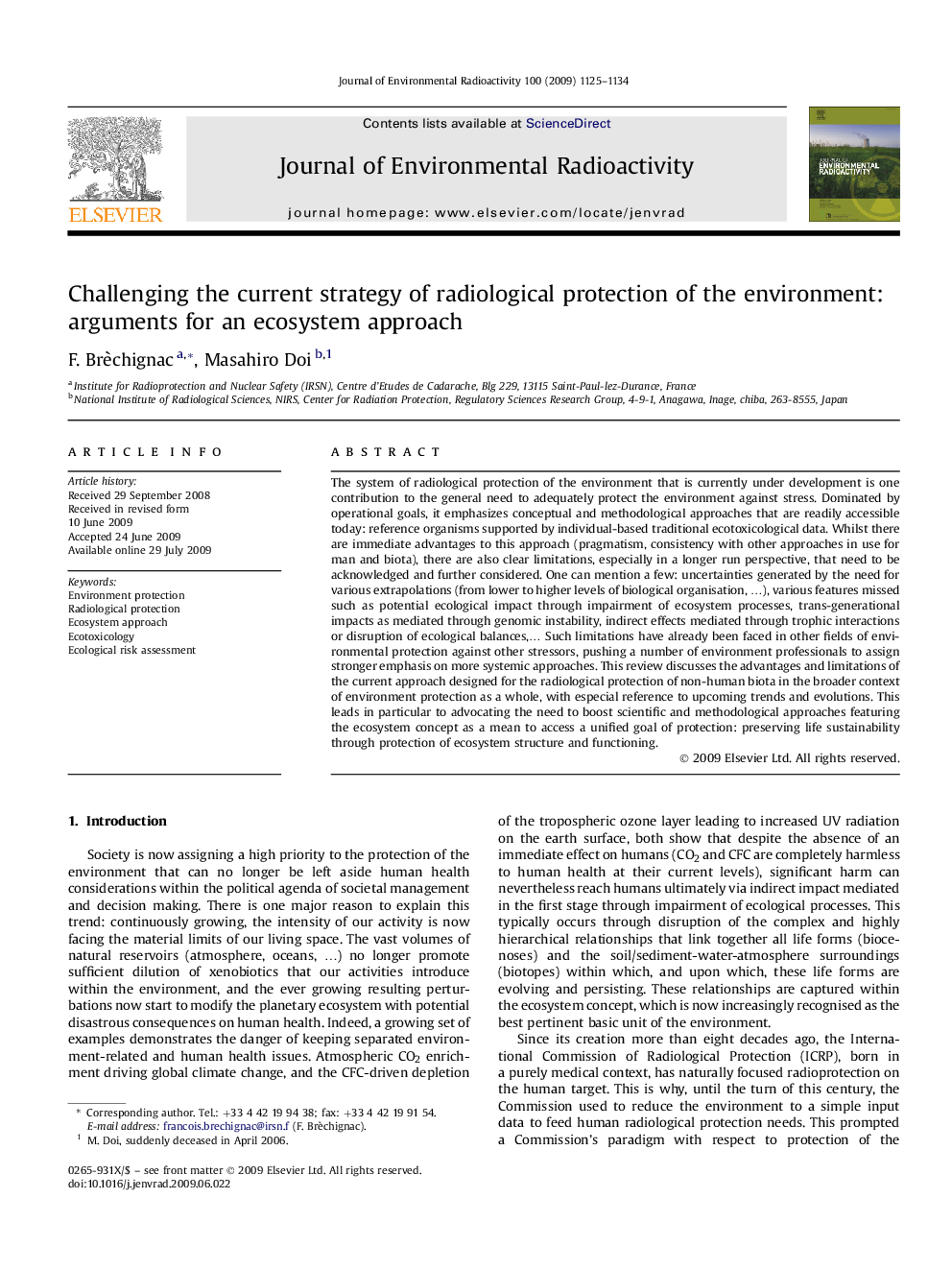| Article ID | Journal | Published Year | Pages | File Type |
|---|---|---|---|---|
| 1738957 | Journal of Environmental Radioactivity | 2009 | 10 Pages |
The system of radiological protection of the environment that is currently under development is one contribution to the general need to adequately protect the environment against stress. Dominated by operational goals, it emphasizes conceptual and methodological approaches that are readily accessible today: reference organisms supported by individual-based traditional ecotoxicological data. Whilst there are immediate advantages to this approach (pragmatism, consistency with other approaches in use for man and biota), there are also clear limitations, especially in a longer run perspective, that need to be acknowledged and further considered. One can mention a few: uncertainties generated by the need for various extrapolations (from lower to higher levels of biological organisation, …), various features missed such as potential ecological impact through impairment of ecosystem processes, trans-generational impacts as mediated through genomic instability, indirect effects mediated through trophic interactions or disruption of ecological balances,… Such limitations have already been faced in other fields of environmental protection against other stressors, pushing a number of environment professionals to assign stronger emphasis on more systemic approaches. This review discusses the advantages and limitations of the current approach designed for the radiological protection of non-human biota in the broader context of environment protection as a whole, with especial reference to upcoming trends and evolutions. This leads in particular to advocating the need to boost scientific and methodological approaches featuring the ecosystem concept as a mean to access a unified goal of protection: preserving life sustainability through protection of ecosystem structure and functioning.
